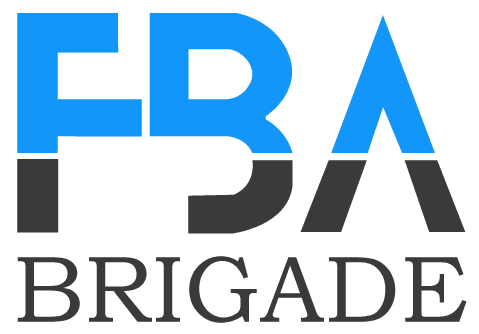At FBA Brigade, we understand that Amazon SEO (search engine optimization) can be complex; just when you think you’ve got it down, a new technique emerges and you feel like you’re starting from scratch. We stay ahead of the curve, ensuring that our strategies evolve with Amazon’s latest features.
Platinum Keywords are one of Amazon’s latest features that, when used effectively, can significantly enhance your Amazon SEO strategy.
If you’re eager to delve into Platinum Keywords, this guide is for you.
Read on to discover:
📌What is a Platinum Keywords on Amazon?
📌What is a Platinum Seller on Amazon?
📌How to Find Amazon Platinum Keywords?
📌Why is Amazon SEO Important?
📌What are Back-End Keywords?
📌How to Optimize Back-End Keywords on Amazon?
📌How to Optimize Amazon Keywords?
Explore these topics to boost your Amazon listings and drive your sales to new heights.
Defines Platinum Keywords on Amazon?
Platinum keywords were once a powerful tool for Amazon sellers, designed to maximize store visibility and enhance the shopping experience for consumers. These keywords helped streamline navigation on product pages, ultimately driving sales.
However, due to a decline in demand, Amazon has phased out the use of platinum keywords. Despite their redundancy, the platinum keywords box remains visible to all Amazon merchants. It’s important to note that filling in this box no longer impacts your SEO efforts or product visibility.
While the feature is still present on the platform, focusing on current and effective SEO strategies will yield better results for your Amazon listings.
Defines Platinum Seller on Amazon?
An Amazon Platinum Seller, also known as a Platinum Merchant, represents the highest rank achievable on the platform. This elite status could only be attained through an invitation from Amazon or by applying to the Amazon support team as a professional seller.
Key Advantages of Being a Platinum Seller:
1️⃣ Increased Visibility: Platinum Sellers enjoyed enhanced visibility for their products, making it easier to attract and retain customers.
2️⃣ Access to Restricted Categories: Platinum Sellers had the privilege of selling products in categories that were otherwise restricted to most sellers on Amazon.
3️⃣ Utilization of Platinum Keywords: These sellers could leverage Amazon’s platinum keywords, which were designed to boost product discoverability and optimize listings for better search results.
While the program has evolved, the concept of a Platinum Seller underscores Amazon’s commitment to rewarding high-performing sellers with exclusive benefits and opportunities.
How to Identify Amazon Platinum Keywords
Locating Amazon Platinum Keywords, although a feature no longer in use, involved a strategic approach to maximize product visibility and enhance search performance. Here’s how sellers previously identified and utilized these keywords:
1️⃣ Keyword Research Tools: Utilize advanced keyword research tools to identify high-performing keywords relevant to your products. These tools analyze search volume, competition, and relevance to help you select the best keywords.
2️⃣ Competitor Analysis: Study your top competitors to understand which keywords they are ranking for. This can provide valuable insights into potential platinum keywords that you might not have considered.
3️⃣ Customer Search Behavior: Analyze customer search behavior using Amazon’s search term reports. This data reveals what terms customers are using to find products similar to yours.
4️⃣ Product Relevance: Ensure the keywords you choose are highly relevant to your product. Irrelevant keywords can negatively impact your listing’s performance and customer satisfaction.
5️⃣ A/B Testing: Conduct A/B testing with different sets of keywords to determine which ones yield the best results in terms of visibility and sales.
While the specific platinum keywords feature is no longer available, applying these strategies can still significantly enhance your overall Amazon SEO efforts and improve your product listings’ performance.
The Importance of Amazon SEO
As the largest eCommerce platform globally, Amazon presents unparalleled opportunities for selling products. However, this vast customer base also means intense competition, making Amazon SEO crucial for success.
Amazon SEO is essential for ensuring your product listings appear in shoppers’ search results. Key aspects of Amazon SEO include:
1️⃣ Product Title Optimization: Crafting clear, concise, and keyword-rich product titles to capture shopper interest.
2️⃣ Keyword Research: Identifying high-performing and relevant keywords to enhance product discoverability.
Keyword Optimization: Strategically placing keywords throughout your product listings to improve search rankings.
3️⃣ Back-End Keyword Selection: Utilizing hidden keywords in the back-end to ensure your products appear in additional relevant searches.
If you’re new to Amazon SEO, the process can seem daunting. Enlisting the services of an experienced Amazon marketing agency can help you navigate and excel in this critical area, ensuring your products achieve maximum visibility and sales potential.
Understanding Back-End Keywords on Amazon
Back-end keywords, also known as hidden search terms, are a crucial component of Amazon SEO accessible only to merchants. These keywords are not visible to shoppers but play a significant role in informing Amazon’s algorithm about the relevance of a product listing, thereby helping it rank higher in search results.
While platinum keywords are no longer in use, many seeking information on “platinum keywords” are actually interested in understanding back-end keywords.
What Are Back-End Keywords?
Back-end keywords are the hidden terms that merchants input in their product listings. Unlike front-end keywords, which are visible phrases in product titles and descriptions, back-end keywords are solely for the algorithm’s use to enhance the discoverability of a product. They allow sellers to target additional keywords that can’t be naturally included in the product’s visible content.
The Importance of Back-End Keywords
1️⃣ Increased Visibility: By using relevant back-end keywords, your product can appear in more search results, reaching a broader audience.
2️⃣ Higher Search Rankings: Properly optimized back-end keywords can improve your product’s ranking in search results, making it easier for customers to find your products.
3️⃣ Target Additional Keywords: They provide a way to target keywords that don’t fit naturally into your front-end content but are still relevant to your product.
How to Find Back-End Keywords
Finding the right back-end keywords involves thorough research, similar to finding front-end keywords. Here are some methods:
1️⃣ Keyword Research Tools: Utilize advanced keyword research tools to type in your main keyword and receive a list of popular alternatives and long-tail keywords.
2️⃣ Manual Research: Conduct manual searches on the Amazon marketplace to identify keywords used by competitors. This can be time-consuming but provides valuable insights.
Implementing Back-End Keywords
Once you’ve identified your back-end keywords, adding them to your Amazon product listing is straightforward:
1️⃣ Go to the inventory section of your Amazon Seller Central account.
2️⃣ Select the product you want to optimize.
3️⃣ Click on “Edit” and navigate to the “Keywords” tab.
4️⃣ Enter your researched back-end keywords into the appropriate fields.
By effectively utilizing back-end keywords, you can enhance your product’s visibility, attract more customers, and ultimately boost your sales on Amazon.
How to Optimize Back-End Keywords
Optimizing back-end keywords is essential for maximizing your product’s visibility on Amazon. Here are some expert tips from our Amazon marketing professionals:
Tips for Optimizing Back-End Keywords
1️⃣ Focus on Amazon-Specific Keywords: Prioritize keywords that are particularly relevant to Amazon shoppers. These are often different from keywords used on other platforms.
2️⃣ Use Back-End Keywords Sparingly: Avoid keyword stuffing. Use a few highly relevant keywords to ensure clarity and effectiveness.
3️⃣ Avoid Punctuation: Use spaces to separate keywords instead of punctuation marks. Amazon’s algorithm does not recognize punctuation in back-end keywords.
4️⃣ Monitor Keyword Performance: Regularly review and adjust your back-end keywords based on their performance. Utilize Amazon’s search term reports and other analytical tools.
5️⃣ Ignore Plurals: Amazon’s algorithm automatically considers plural forms of words, so there’s no need to include them separately.
6️⃣ Adhere to Amazon Guidelines: Follow Amazon’s rules and guidelines for back-end keywords to avoid penalties or listing removals.
7️⃣ Ensure Relevance: Select back-end keywords that are directly relevant to your product. Irrelevant keywords can harm your SEO efforts and customer satisfaction.
8️⃣ Avoid Brand Identifiers: Do not use brand names or identifiers in your back-end keywords. Amazon’s policies prohibit this and can lead to issues with your listing.
By following these strategies, you can effectively optimize your back-end keywords, enhancing your product’s discoverability and driving more sales on Amazon.
How to Optimize Amazon Platinum Keywords
To maximize your Amazon SEO efforts and stay ahead of the competition, it’s crucial to effectively optimize all your Amazon keywords. This includes not only traditional keywords but also leveraging Amazon’s advanced features. Here are key strategies recommended by FBA Brigade experts:
Techniques for Effective Keyword Optimization
1️⃣ Enhance Product Listings with General Keywords:
Title and Description: Incorporate general, high-traffic keywords throughout your product title and description to improve search relevance.
Bullet Points and Category: Use relevant keywords in bullet points and select the appropriate product category to ensure better visibility.
2️⃣ Optimize Back-End Keywords:
Back-End Keyword Field: Utilize the back-end keyword field in Amazon Seller Central to include additional relevant keywords. This field is essential for improving your product’s discoverability without cluttering visible content.
3️⃣ Leverage Additional Product and Keyword Fields:
Search Filters: Take advantage of Amazon’s search filters to enter additional product and keyword information. Be thorough and detailed to maximize searchability and visibility.
4️⃣ Focus on Positive Reviews:
Review Impact: Encourage positive customer reviews as they can enhance your product’s credibility and indirectly impact keyword ranking by improving overall listing quality.
5️⃣ Ignore Case Sensitivity:
Keyword Entry: Amazon’s algorithm does not differentiate between lowercase and uppercase letters, so focus on relevant keywords without worrying about capitalization.
6️⃣ Include Common Misspellings and Colloquial Phrases:
Spelling Variations: Account for common misspellings and colloquial phrases used by customers. Including these variations can help capture a broader audience and improve search relevance.
By implementing these strategies, you can significantly boost your Amazon SEO, making your products more discoverable and competitive. For expert assistance and tailored SEO strategies, consider partnering with FBA Brigade to optimize your Amazon presence and drive greater success.
Conclusion
Optimizing Amazon SEO involves using back-end keywords effectively, integrating relevant general keywords into titles and descriptions, and leveraging Amazon’s search filters. For expert guidance and tailored strategies, FBA Brigade is here to help you achieve maximum visibility and success on Amazon. Encourage positive reviews, and remember that case sensitivity isn’t an issue. Including common misspellings and colloquial phrases can also broaden your reach.




